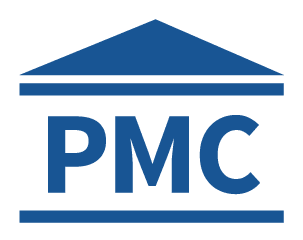Navigation
Install the app
How to install the app on iOS
Follow along with the video below to see how to install our site as a web app on your home screen.
Note: This feature may not be available in some browsers.
More options
-
By using this site you agree to the terms, rules, and privacy policy.
-
Charlie's Restoration Giveaway #2 (Entire Home EMF Mitigation & Protection Along With Personal Protection) - Click Here To Enter
-
Dear Carnivore Dieters, A Muscle Meat Only Diet is Extremely Healing Because it is a Low "vitamin A" Diet. This is Why it Works so Well...
Rest the rest of this post by clicking here
-
The Forum is transitioning to a subscription-based membership model - Click Here To Read
Click Here if you want to upgrade your account
If you were able to post but cannot do so now, send an email to admin at raypeatforum dot com and include your username and we will fix that right up for you.
You are using an out of date browser. It may not display this or other websites correctly.
You should upgrade or use an alternative browser.
You should upgrade or use an alternative browser.
Is Raw Sea Kelp Possible To Find?
- Thread starter DMF
- Start date
- Joined
- Oct 30, 2015
- Messages
- 820
what do you mean by raw? Kelp is available in all coastal areas.. Any kelp powder supplement should be fine and I've seen bagged dry kelp in health stores.
What powdered brands do you recommend?what do you mean by raw? Kelp is available in all coastal areas.. Any kelp powder supplement should be fine and I've seen bagged dry kelp in health stores.
Kelp is generally the cheapest seaweed. However, in addition to Iodine, seaweed is also a significant but variable source of cadmium, mercury, lead, arsenic, all undesirable. Below an approximate level selenium is good.
>Iodine levels in seaweed seems to be affected by a number of factors such as geographical origin, environment (season, salinity of the water, etc.) but also the part of the seaweed used, age of the seaweed and post‐harvest storage conditions among others (Teas et al., 2004). Overall, mean levels of iodine were highest in brown algae as compared to red and green alga. The highest mean concentrations were reported for dried Kombu (3,529 mg/kg, LB=UB). Several brown algae with food applications are well known for being rich sources of iodine, in particular in the Laminaria and Saccharina genus (e.g. Kombu, Sugar kelp), with iodine levels that can go, in certain occasions, above 10,000 mg/kg dw (Duinker et al., 2016; Duinker et al., 2020; Aakre et al., 2021; Blikra et al., 2022). To also mention the relatively low mean levels of iodine reported in dried samples of the red alga Laver (84.8–85.1 mg/kg, LB–UB), the most reported alga in the EFSA Comprehensive Database, typically consumed as sushi and part of other Japanese dishes. The relatively high values reported for ‘Algae based formulations (e.g., Spirulina, Chlorella)’ seem an indication that several samples contain specific brown alga species rich in iodine since Spirulina and Chlorella, two typical algae used as food supplement, are well known to contain much lower or almost no iodine at all. Very limited data on iodine were available for halophytes (n = 3); much lower iodine levels were reported as compared to seaweeds.

 www.ncbi.nlm.nih.gov
www.ncbi.nlm.nih.gov
>Iodine levels in seaweed seems to be affected by a number of factors such as geographical origin, environment (season, salinity of the water, etc.) but also the part of the seaweed used, age of the seaweed and post‐harvest storage conditions among others (Teas et al., 2004). Overall, mean levels of iodine were highest in brown algae as compared to red and green alga. The highest mean concentrations were reported for dried Kombu (3,529 mg/kg, LB=UB). Several brown algae with food applications are well known for being rich sources of iodine, in particular in the Laminaria and Saccharina genus (e.g. Kombu, Sugar kelp), with iodine levels that can go, in certain occasions, above 10,000 mg/kg dw (Duinker et al., 2016; Duinker et al., 2020; Aakre et al., 2021; Blikra et al., 2022). To also mention the relatively low mean levels of iodine reported in dried samples of the red alga Laver (84.8–85.1 mg/kg, LB–UB), the most reported alga in the EFSA Comprehensive Database, typically consumed as sushi and part of other Japanese dishes. The relatively high values reported for ‘Algae based formulations (e.g., Spirulina, Chlorella)’ seem an indication that several samples contain specific brown alga species rich in iodine since Spirulina and Chlorella, two typical algae used as food supplement, are well known to contain much lower or almost no iodine at all. Very limited data on iodine were available for halophytes (n = 3); much lower iodine levels were reported as compared to seaweeds.

Dietary exposure to heavy metals and iodine intake via consumption of seaweeds and halophytes in the European population
EFSA assessed the relevance of seaweed and halophyte consumption to the dietary exposure to heavy metals (arsenic, cadmium, lead and mercury) and the iodine intake in the European population. Based on sampling years 2011–2021, there were 2,093 ...
EMF Mitigation - Flush Niacin - Big 5 Minerals
Similar threads
- Replies
- 2
- Views
- 2K
- Replies
- 58
- Views
- 9K
- Replies
- 5
- Views
- 3K
- Replies
- 17
- Views
- 2K
- Replies
- 31
- Views
- 16K
- Replies
- 6
- Views
- 4K
- Replies
- 5
- Views
- 2K
O
